|
Things have been hectic around here with orders being filled, fall sampling and a road trip to Fort Washington, but I wanted to post some information on some new equipment and what I've been up to. I was contacted a few months back by the children of Margarita Macia, a knitter with a full studio of machines who recently passed away. The following images are of pieces or instructions to pieces I picked up from her workroom. It was lovely meeting her children, who told stories about her life in Argentina where she used a motorcycle to pick up yarn, deliver orders and visit clients. Later in Fort Washington she made custom pieces for women in the area. Aside from amazing stories she left a series of boxes brimming with samples and swatches in outrageous yarn colours which will keep me busy for a LONG time. The DUT machine came with the studio equipment and it represents a cusp technological development prior to electronic machinery where you the user are basically operating as a computer in tandem with punchcards and prisms. However, you are still manually moving the carriage and you still have to write out a pattern and operate levers at the correct point. I would liken it to a jacquard loom. These last two images are of the autocam. A really neat device for N series Dubied machines which is similar to a conventional punchcard but in some ways more interesting. It consists of a drum in which you place knobs of various heights, so that rather than a hole on a punchcard instad you are placing a knob in a hole to ask the machine to tuck, slip, etc. The arms called A in Fig 2 meet the carriage at the end of each row thus advancing the drum one row onwards. On my autocam I have 24 rows . On another machine, with another autocam I have 36. It all depends on the make and capabilities of the machine. There are times when I make a complicated pattern and my brain cannot consistently a perfectly count the 6 steps required to make the pattern over 450 rows, so this helps a lot. I hope I have not lost you. These analog formats of selection are so fascinating.
I ended up digitizing the manuals for these and they are available here. With a further parts reference manual for NHF Dubied machine available on the knitting here. Stay tuned for more on analog technology and my experiments.
0 Comments
When I think of positive associations with clothing, I think of favourites, wearability, great fit, humorous or funny colours and interesting textures. When I think of the negative associations, I think of rigid beauty and sizing standards, coffin clothing (a term that describes rather 2 dimensional clothing), esoteric fashion history references and trend analysis. I felt that in school trend analysis and sizing was a huge thing. There was very little interest in the process of developing a personal structure for idea development, working style or creative problem solving. So Part 2 is about that…..
When I graduated from fashion school I took a job doing piecework, cutting and eventually designing for a now large label in Toronto. On my breaks I would have a knit or crochet sit in with my fellow co-workers and I found it therapeutic. We would do math calculations to switch a knitted garment to a crochet one or to adjust the gauge for a different yarn thickness. Around that time I had bought an LK150 knitting machine to experiment. It was a sad little plastic machine that held no charm for me. I’m afraid I swore off machine knitting for another five years. But I continued to knit and crochet, even at one time doing crochet piece work in the form of openwork cotton sweaters as well as continuing to design easily sewn, trend appropriate clothes for the label I worked at. A lot changed when I went back to school for textile design at Sheridan College. I can’t say enough great things about that program except that perhaps it should be a degree program rather than just a diploma program. I learned how to develop original creative work from brainstorming, used sketchbooks to record qualities of line and material, began to use log books, as well as collage, and intuitive creative play. These are great tools that allow me to record results, build shapes and above all develop original work. At the time I was focused on screen printing which is very close to painting. I have logbooks from this period with detailed information on colour mixing, effects and results. I use this same method today with my knitwear. After graduation I struggled a bit to find my footing. Screenprinting and garment making in Canada is a very competitive space. I had developed some silkscreened knitwear which I really enjoyed as well I spent a lot of time deconstructing second hand garments from vintage and thrift shops. I was really drawn to the sweater aisles and from there collages, and sketchbook work from sweater scraps emerged. Around the same time I picked up an old dubied hand flat knitting machine in dire need of restoration. Its wooden handles and solid metal frame felt so inspiring, it reminded me slightly of my dad’s clockmaking machines which were built to last. This was a far cry from the LK150 I bought five years before. The Italian lady I bought the Dubied from lived close by in Stoney Creek. She was still wearing garments made on the Dubied and they were absolutely beautiful. She had old cones, old magazines and some wonderful descriptions about the types of garments she made over the years. She seemed upset about selling her knitting machine which struck me as odd. I distinctly remember her sitting me down to tea outside her 1950's bungalow in the summer with a Chuawawa sitting on her lap. At this point I spent a few years educating myself with books and manuals on how to operate hand flat knitting machines properly. There seems to be so much information on hobby machines but so little on hand-flats. It was very intriguing. I turned to logbooks to record my findings and I worked this helped me to replicate effects and feel some progress. At this time I was still silkscreening. My switch to knitting was ugly and dramatic when I lost my studio space due to a horrible landlord. I spent some time thinking about my direction. I loved that the knitting machine allowed you to design and control the fabric itself. One could knit complex textures injecting a warmth and personality into a garment…. So I bought some more knitting machines….. Things have been busy around here with the Spring City of Craft, the COStyle event, sales and renovations in the studio. I feel really grateful for all of the interest in my work. I thought I would talk a bit about how I fell into knitwear. Its a meandering personal story, so I'll post it in two parts. I hope you enjoy it.  ------- We lived in England until I was nine. I vividly remember picking out plastic purple barrettes in Tesco’s to go with my purple pinafore. They came in a rainbow of colours fixed to a small branded card and were PERFECT FOR MY ENTIRE WARDROBE. The importance of coming out of Tesco’s with the barrettes was totally disproportionate with their actual usefulness. Throughout my childhood and teenage years I had a lot of emotional responses to colours, shapes and forms when it came to fashion. Our house was in the Cotswolds, a particularly picturesque part of rural England in which we were living the early 80’s dream of British hippie family life. Dad was a clockmaker and mum was a weaver. And EVERYTHING WAS HOMEMADE. Mum used to sew the majority of our clothes. She would sew what pleased her or sew in sets to save time so my sisters and I would end up with a wardrobe born of whimsy, frugality and colour experimentation. Depending on my age this was either fabulous or really terrible. There was a lot of lovely pinwale corduroy with paisleys and printed folklorish patterns. As well as classic liberty florals sewn into pinafores, frocks and matching accessories. Granny would round out this utterly British look with Fairisle cardigans and matching knitted accessories. In fact both grannies knitted us all manner of warm cozy sweaters. The house was full of floral and checked dresses, hand knit cardigans, and freshly pressed linens. As I grew older, I felt the siren call of mass produced clothing. The sort of which everyone in Canada, my new home, had. Everyone wore matching tracksuits with Thundercats and He-man on the front. The girls wore miniskirts and scrunchies. All that fabulous custom made clothing my mother made was suddenly jarringly uncool and my new vocabulary was miniskirts, leggings, printed sweatshirts and jeans. 100% of this ready to wear clothing fit my broad shoulders and tiny hips terribly. I got my first sewing machine at a fairly early age. Whether it was because I was actually interested in sewing or I just wanted to imitate my mum, I cant remember but I did have one by age ten. It was a Singer hand crank sewing machine. At first I made outlandish costumes and home organizers. But later I began to sew myself summer clothes as well as refitting my ready to wear garments. By the time I was in grade 10 I was sewing all the time and making clothes for one day, which were refashioned the next and so on. One year my granny gifted me a bunch of her custom clothing from the late 1950’s. It fitted me so well, in all the right spots. Wearing it transformed my idea of ‘vintage’ and ‘fashion,’ as well, my curiosity grew about how fashion could evolve structurally alongside cultural change. Grannies dresses from the 1950’s were both like and very unlike the dresses I wore as a child and I wondered why that was. At this point, I went to university for fashion design. It was permission for everyday to be like Halloween, even more so than high school. I enjoyed showing off my design and tailoring prowess while at the same time hating all of the classes. The schools teaching structure managed to strip away all of the positive feelings about sewn fashion in favour of a rigid type of industry standard. My intuitive, sewn pieces seemed at odds with the teachers marking processes. It was around this time that I took up knitting and crochet.
I have some more lovely images from Lavori Di Maglieria and Revue Du Tricot (produced by Dubied) circa 1927. There is something light and airy about them that reminds me of spring, even the winter ones! I think it is the bold colour use and the graphic quality of trees and landscapes in the background. There are many technical pages, graphs and pattern suggestions in the magazines too and I'm thinking about compiling them into a large PDF for inspiration and professional use.
I just love vintage knitwear and I want to share these with you. These images are from issues of Lavori Di Maglieria a magazine published quarterly by Dubied. They also come with instructions for making up and some of the textures are just beautiful. What struck me in these issues were the dresses and coats that expressed volume in a knit. I have a feeling this is to do with the manufacture of circular knitting machines and the use of knit in yardage form. There were also some lovely posters type advertisements for new machinery and here you see a real shift from the cottage industry N series Dubied machines to factory level production.
Business wise I have been extremely busy. So much so it has been hard maintaining an online presence while so much real world activity takes place. I am so thankful for that success, activity and busy-ness! However I post daily on instagram: annakari_knitwear if you would like to see what I am up to and really just want to post items of significance on the blog when I feel excited about them. I'll have some Revue De Tricot to post soon which are from the 1920's and I hope to make time to discuss carriage servicing, repair and cleaning. Recently I had the pleasure of doing a CLA on a 1930's knitting machine. I had to lean on my dad to repair some built force trauma on the Cam plates and I've really learned a lot about various carriage structures. I'm currently finalizing my SS15 samples and I don't think I've ever felt this excited about a collection. I have been working really hard on creating complex lace patterns and it really has paid off! I hope you enjoy these images and learn something from them.
Pattern drafting and sewing technology: 1. Fabrics and Pattern Cutting by Winifred Aldrich 2. Metric Pattern Cutting for Womens Wear by Winifred Aldrich Fashion History:
1. Fashioning Apollo by Nicholas de Monchaux 2. Vionnet by Betty Kirke 3. Narciso Rodriguez by Rodriguez and Betsy Berne 4. Fashion in a Time of Fascism by Maria Lupano 5.Christian Lacroix on Fashion by Lacroix Lately I've had some blog and PM queries about the differences between hand flat knitting machine brands, as well as between knitting carriages, capabilities and how to decipher the inscriptions on knitting machines. Its all very nitty gritty and technical but if you are a buyer looking to get the 'right' machine then nitty gritty is pretty important. I thought we'd start with machine bed inscriptions. Machine bed inscriptions are engraved sets of information located on the front left of the metal needle bed. They designate: model #, needle bed length (usually in centimetres) and gauge # expressed in either metric or English. So model#, bed length, and gauge. Lets start with model #. Some Dubied models are MM, MR, NF2, NHF2, N4, NF4, NHF4 (some other brands of machine are: Santagostino, Cabo, Protti, Cabo and Stoll). In the case of Dubied's, the M series were made in the 1930's and 40's they were simpler machines with very little patterning ability. The N series were produced in the late 1940's onwards. They had the ability to slip or tuck certain stitches based upon a more complex carriage configuration. The N signified the model line, the HF signified the ability to slip and tuck with particular carriage cams and the 2 or 4 signified the number of yarns the machine was capable of changing using yarn holders. Machine bed length and gauge: Metric guage indicates the distance between needles in tenths of a millimetre and English gauge indicates the number of needles per inch. English gauge is the most common expression of gauge used in industrial knitting parlance today. Metric is commonly found on pre-1940's knitting machines so sometimes converting gauge measures becomes necessary. Gauge can be expressed as 32 metrically or 8 needles per inch in English gauge as seen in the chart below. Some common knitting bed lengths are 120cm and 100cm. 120cm long beds are great for wider projects or larger size panels. I've also got some fun pictures from another set of Lavori Di Maglieria. Enjoy!
Just a quick video of me working on some knitting:) This is my Santagostino gauge 7 machine.9/18/2014  It really feels like fall here in Canada. We've got that rainy, wet leafy vibe going on. But I love that. Maybe I'm a knitwear designer because I love fall so much? Check out my new work here. I'm excited about the triangle mittlets and scarves. They will be up on my big cartel storefront soon. I've also had some requests for manuals and it seems like a fine time to just start offering my Dubied manuals as photocopied bound books to those interested. You can go here for that. |
Anna is a Hamilton based knitwear and textile practitioner blogging about her collection development as well as pre-1950's knitwear technology.
Links
Emma Gerard Make something bookhou Iben Hoej krystalspeck workshop bespoke truckee amy lawrence designs Categories
All
|















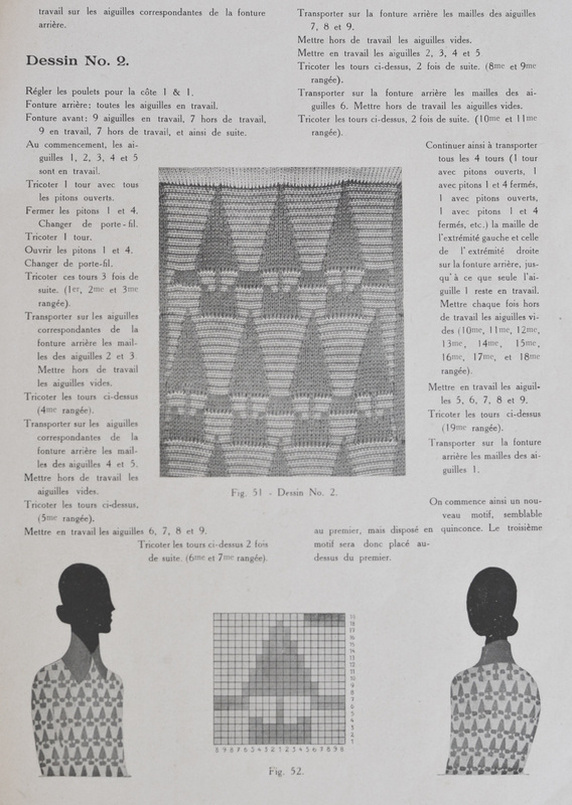


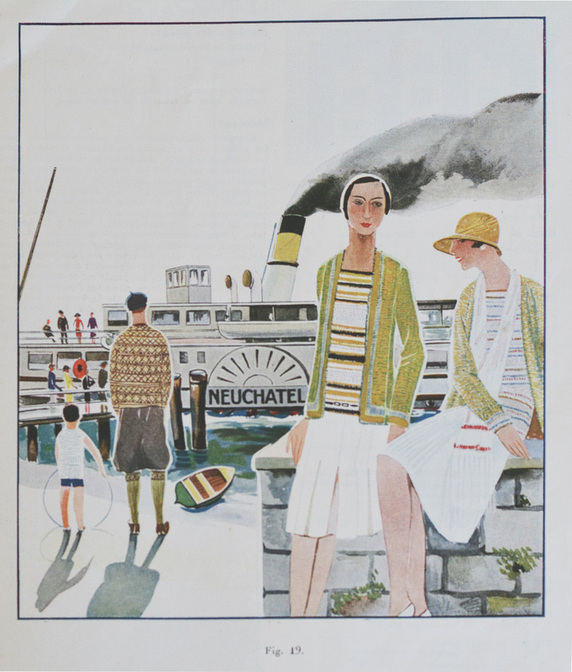


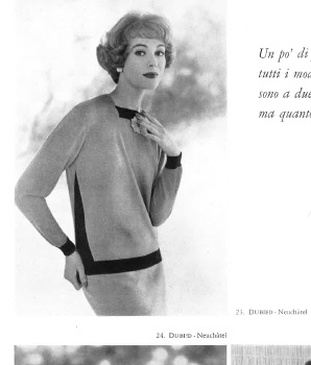






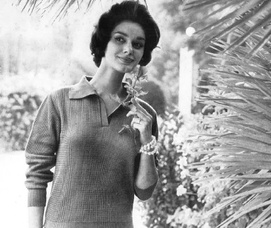















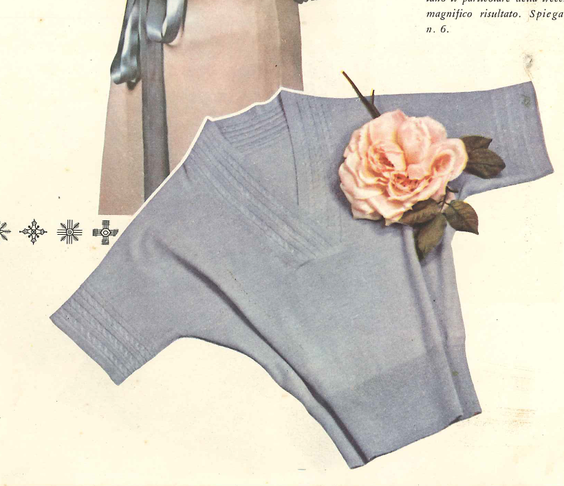


 RSS Feed
RSS Feed